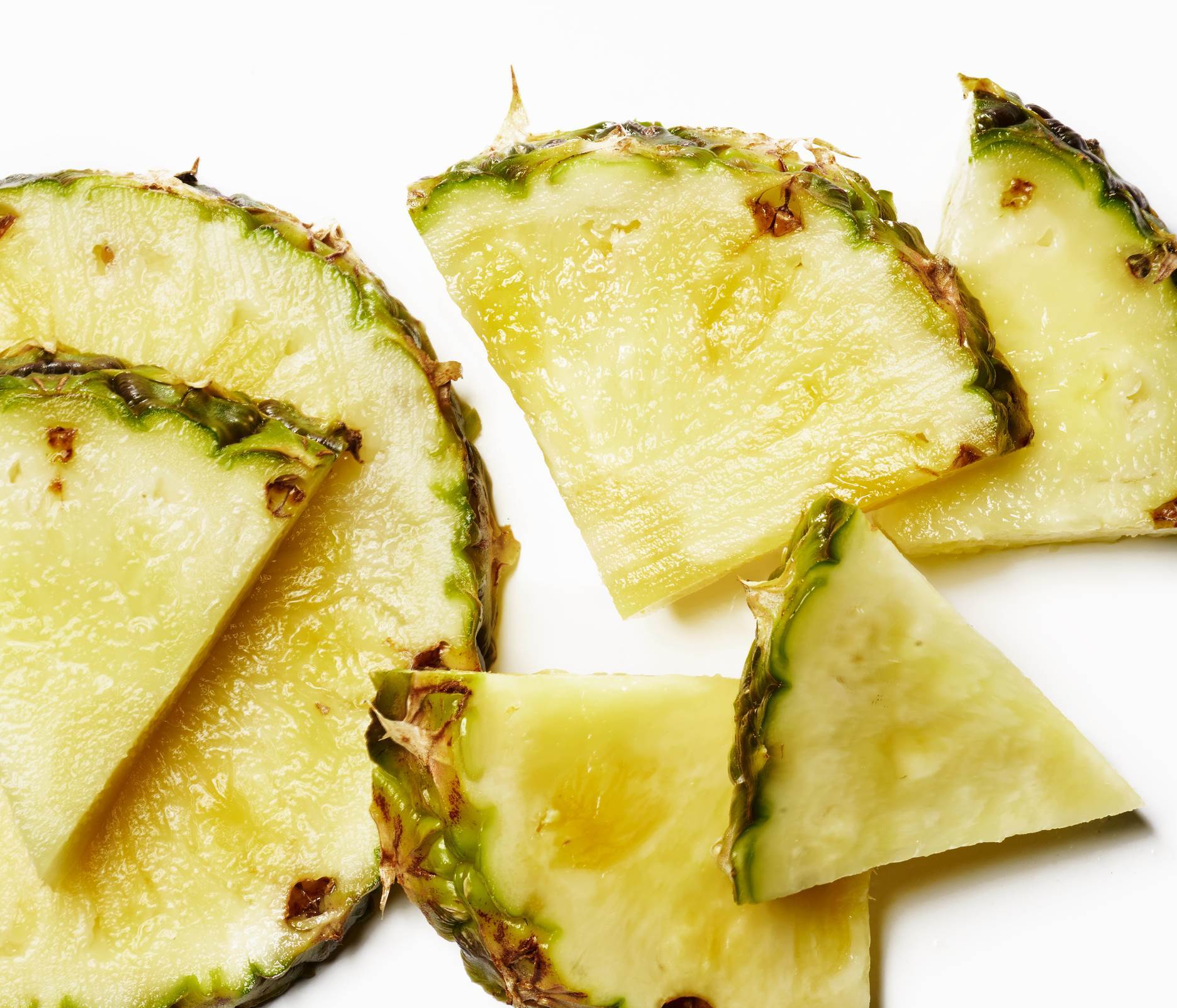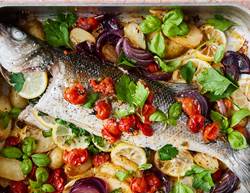Maybe you’ve mastered making better-for-you Italian food, or tackled the fine art of outsmarting a craving. Maybe you’ve even made the gym a regular habit (kudos!). But if you’re over 40 and all of this feels like it’s to no avail, you’re not alone. In fact, there’s science behind your weight loss plateau.
“As we hit menopause and our oestrogen levels begin to dip, we’re more prone to gaining weight around the middle,” explains dietitian Amy Gorin. “Age itself also plays a role here - we lose muscle mass as we age, around 10% each decade after age 45, and while we’re losing muscle, we’re also likely to gain body fat.” Because muscle burns more kilojoules than body fat, that means we don’t need to eat as many daily kilojoules as we get older.
Due to these changes in our bodies, Gorin says you have to alter your diet and prioritise exercise - especially resistance training - to keep your metabolism humming along. To flatten your belly after 40, try these easy tips from nutritionists who want to see you succeed. (P.S. Grab those weights!)










Photograph by Katarina Lofgren/Getty Images
1. Befriend “slow carbs”
Avoiding carbs? Think again, says nutritionist Christy Brissette. She often sees clients in their 40s cutting carbs while trying to lose weight when their focus should be on eating better quality carbs instead.
“Slow-release carbs” like sweet potatoes, beans and whole grains fall low on the glycaemic index and can actually steady your blood sugar and keep cravings in check. “Slow carbs help prevent spikes in insulin which lead to storing extra fat, especially belly fat,” Brissette explains.
Try options like roasted chickpeas in lieu of rice cakes for a snack, lentils instead of white rice for a dinnertime side and other healthy staples like rolled oats, black rice, farro and amaranth.
3. Sip differently
If you’ve been chugging soft drink your whole life, now’s the time to quit - for good. “If you love sugar-sweetened drinks like soft drinks, change up your habits, since regularly drinking these beverages is linked with increased belly fat which can be particularly persistent after you hit 40,” stresses Gorin. And remember, artificially sweetened diet drinks are no better for you.
If the carbonation is what you crave, go for soda water or sparkling water. For a hit of flavour, add a splash of unsweetened orange juice or grape juice to top it off.
Photograph by Nazar Abbas Photography/Getty Images
4. Spread out your kilojoules
Avoid the urge eat most of your kilojoules at night, cautions nutritionist Lisa DeFazio. It’s easy to overdo it in the evening if you make dinner your biggest meal and then snack in front of the TV, but “you don't need those kilojoules while sleeping, so your body stores them as fat,” DeFazio explains.
Instead, focus on eating a balanced dinner with protein, whole grains, and plenty of vegetables. When hunger strikes late at night, try popping a handful of frozen grapes if you’re craving something sweet or a serving of air-popped popcorn if you’re in the mood for something salty.
Photograph by Leon Harris/Getty Images
5. Plank more
Countless women turn to crunches and situps to tighten their tummies, but planks are far more effective because they challenge even your deepest abdominal muscles—and work your butt, thighs, and shoulders at the same time! Plus, planks help fix diastasis recti (AKA abdominal separation), something many women experience:
“If you’ve had children (or even if you haven’t), it’s possible that you have [abdominal separation], which means your belly sticks out and causes a pouch because the space between your left and right belly muscles has widened,” say nutritionists Lyssie Lakatos and Tammy Lakatos Shames (The Nutrition Twins). “Sit-ups and jack-knife exercises make this worse, but planks strengthen the abs without causing the pouch!”
Photograph by Patrizia Savarese/Getty Images
6. Amp up your vitamin D and calcium
“There are many reasons to get enough of both of these nutrients, but one reason is that doing so may help decrease belly fat,” says Gorin. “In one study, people who got 100 [International Units] of vitamin D and 350 milligrams of calcium from fortified orange juice had a bigger decrease in their belly fat, versus the people not drinking the fortified juice.”
For calcium, consider eating more broccoli, kale and collard greens. For vitamin D, befriend shiitake mushrooms and egg yolks.
Photograph by LauriPatterson/Getty Images
7. Make sure every meal contains these two things
Repeat after us: protein and veggies, protein and veggies, protein and veggies. Include this duo at every meal. “Protein not only aids in organ function and muscle growth, but also helps in regulating blood sugars,” says Bouvier. “Incorporating protein and vegetables at every meal helps to ensure adequate nutritional intake, increased fullness, and a healthy weight after 40—and at any age, for that matter.”
Photograph by Maren Caruso/Getty Images
8. Keep your sweet tooth in check
Not only will this help you cut back on sugar, but it can also help you beat bloating. “If you’re a fruit or sweets-lover, you may be sensitive to sucrose, which is found in many fruits—particularly melons, peaches, tangerines, mangoes, pineapples and especially in dried fruits like dates,” say the Nutrition Twins. It’s also found in lollies, peanut butter, sweetened yoghurt and these other secret sugar bombs.
So how is the sweet stuff bad for your bowels, exactly? “Sucrose is formed when the sugars glucose and fructose bind together. In order to break this bond, you need the enzyme sucrase, which is low in many people, causing unabsorbed sucrose to travel down the bowel, drawing water from the intestinal cells, resulting in cramps and diarrhea,” explain the Nutrition Twins. “When the sugar finally gets to the large intestine, bacteria ferments it, creating gas and bloating.” If you think you’re suffering from sensitivity, talk to your doctor. (Here are 5 signs your bloating isn’t normal.,/a>)
Photograph by gilaxia/Getty Images
9. Make sure you’re eating enough
Slashing kilojoules doesn’t translate to slashing a size or two off of your pant size. “This is super common for my clients in the over-40 crowd who are trying to lose weight,” says Brissette. “They drop their kilojoules too low so their bodies go into fat-preservation mode.”
Bottom line: You need to make sure you’re eating enough to keep your metabolism running regularly. “Don't drop below 5,000 kilojoules (1,200cal) a day, and if you do, add 1,250 kilojoules (300cal) the next day.” And never underestimate the importance of taking a short break from your “diet” if you’re hitting a weight-loss plateau, stresses Brissette. “It's important for your mental health, too!”
Photograph by Sam Edwards/Getty Images
10. Consider taking a multivitamin
“Supplementation is an important part of any healthy diet regimen, particularly when trying to stay fit after 40,” says Bouvier. “Consuming a daily multivitamin alone helps to fill in nutritional gaps that we don’t always get from food.” Bonus: Some research shows a daily multivitamin can help with weight loss and weight maintenance over time, and can even help control appetite.
Photograph by Blend Images - Jose Luis Pelaez Inc/Getty Images
2. Prioritise strength training
[description]You're logging major kilometres on the treadmill but not noticing any difference. What gives? You can blame those dropping oestrogen levels, which lead to a decline in muscle mass, says nutritionist Gisela Bouvier.
“Doing workouts that focus on weight training can significantly help keep and grow more muscle mass,” says Bouvier. “Body weight and other forms of weight-bearing exercises are also very effective.” So if you love cardio exercise, try a bootcamp-style class, or do high-intensity interval training.
Or, for a simple way to start strength training at home try this.










